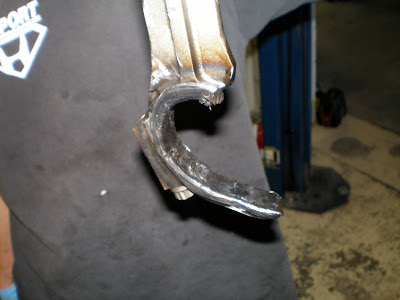With FF Battle 9 days away the crunch is on to get Hasport 88 CRX ready. The Plan? Jam a J35 from a 2004 Honda Odyssey in and make the necessary suspension adjustments make it handle. The J35 and trans weighs an extra 215 lbs and that's all mounted over the front wheels. In some weird way, will that mean better front end downforce? Or will it just create problems.
Here's the engine, a J35A4; it came stock with 240 hp at the flywheel. It will be interesting to see if what gains can be made in horsepower tuning with an AEM EMS. If I can get a header for it, that may help too.
The first preparations for the CRX involve some mods to the engine bay, this is Honda's biggest engine and it touches in a couple of different places. Some of the rear crossmember is trimmed away, as well as some of the headlamp bucket. BTW if you click on the pictures you can see larger images for better detail.
I have gloves, I really should wear them.
One thing I noticed after removing the weld-in K-series bracket, rust had formed under it on the framerail. So this time the framerail was painted with weld-thru primer and then the edges were sealed with body seam sealer. I also just welded the edges of the bracket instead of in the holes. That way if I ever get the itch to mount some new Honda engine hotness it will be easier to remove the J-bracket.One other thing I should mention in the engine bay prep is moving the brake proportioning valve from the shock tower to the firewall. It had already been done on my car because of the K-series engine. If people want I can put up a step by step on how to do it. Just let me know.
Next the engine install.



























